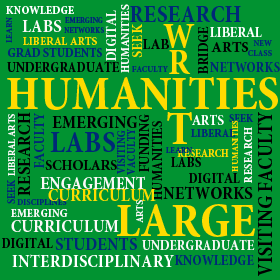Undergraduate Research: Classical Studies 2012/13

Rhyne King did research during the summer of 2013 in preparation for his senior thesis on the historiography of the Achaemenid Empire. The object of his thesis is to compare the Greek sources about the empire (Herodotus, Ctesias, and Xenophon) with Old Persian inscriptions and other material objects. For the bulk of the summer he was learning Old Persian with Professor Jacques Bromberg and doing secondary readings on areas of cultural relevancy, especially Zoroastrianism. Late in July, he took a trip to London to examine the British Museum's objects from the Achaemenid Empire.
The Achaemenid Empire (or First Persian Empire) existed from roughly 550 BC to 330 BC, when Alexander the Great conquered Persia. Its capital was in modern day Iran, but the holdings of the empire at its greatest extent stretched from Western India to Egypt and parts of Greece. It is often cited as the first “world empire” because of its tremendous size.
Most of what we know about the Achaemenid history comes from Greek sources. However, the Greek sources carry certain biases with them, especially because the Achaemenids attempted to conquer Greece. Therefore Rhyne hopes to obtain a more balanced view of the empire’s history by comparing what these Greek sources say with what materials the Achaemenid Empire itself left behind. He is particularly interested in cultural aspects of the Empire, such as religion.
Zoroastrianism is an ancient Iranian religion that developed over 1000 years before Christ and is still practiced by a relatively small number of worshippers today. The basic tenets of Zoroastrianism are complicated and have changed greatly over time, but much of the focus is on the two opposite forces of Ahura Mazda (essentially, good) and Angra Mainyu (evil). There has been considerable scholarly debate over whether the Achaemenid Emperors were actually practicing Zoroastrians, and he intends to examine this in his eventual paper.
The HWL-funded travel to the British Museum was particularly important to Rhyne’s research because they have many Old Persian inscriptions that he was able to translate and can now use in comparison with Greek histories. Moreover they had decorative objects (such as wall reliefs) from Achaemenid palaces which depict artistic representations of certain aspects of the empire, such as (possibly) religion.
